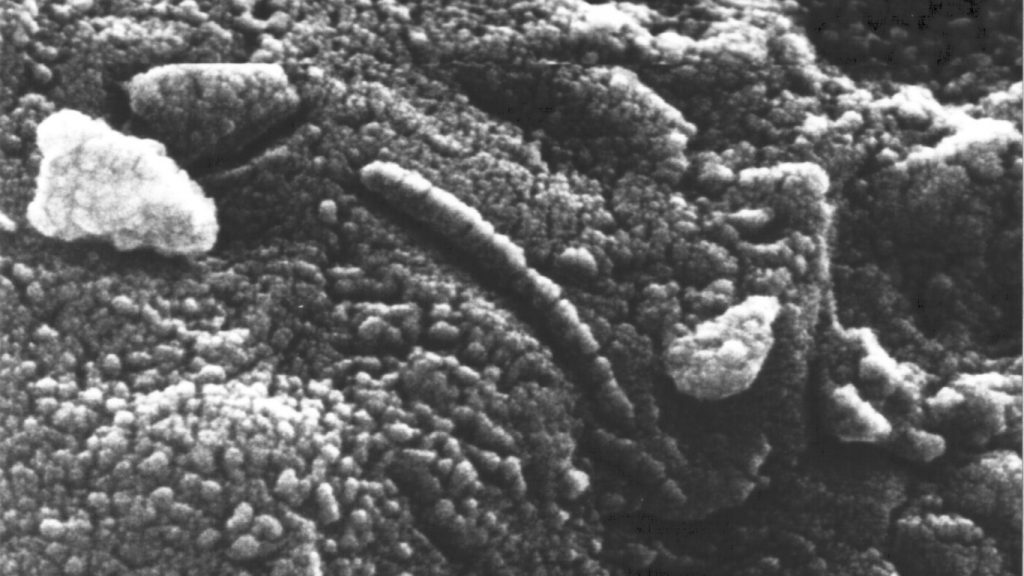A new study by the Carnegie Institution for Science’s Andrew Steele has indicated that signs of ancient life in a famous Martian meteorite may be due to geochemical processes.
In 1996, a team of NASA scientists led by astrobiologist David McKay caused a sensation when they published a report in Science claiming that a Martian meteorite found in Antarctica contained chemical compounds and formations that could have been formed by ancient life on the Red Planet billions of years ago.
This meteorite was called Allan Hills 84001 and was found in the Allan Hills region of the Far Western Ice Field in Antarctica on December 27, 1984.
It was made up of orthopyroxene, chromite, maskelynite, and iron-rich carbonates. It was one of the shergottite–nakhlite–chassignite (SNC) group of meteorites, which means that it originally came from Mars.
It is believed that Allan Hills 84001 was formed under the Martian surface 4.091 billion years ago around what is now the Eos Chasma in the Valles Marineris canyon. About 17 million years ago, a giant meteor impact blasted it off Mars, and it orbited the Sun until 13,000 years ago when it fell on the Antarctic ice cap.
In the 1996 paper, McKay and his team claimed to have found what appeared to be fossils of ancient nanobacteria. In addition, they found chemical compounds that they said were the result of organic decay.
The latest revelations include data from Perseverance and Curiosity Mars rover missions. This included imaging isotopic analysis, and spectroscopy to learn more about the origin of the molecules and structures in Allan Hills 84001.
Several proce3sses are supposedly said to have happened simultaneously. One of them, particularly, was serpentinization, which is the interaction of iron- or magnesium-rich igneous rocks with circulating water at low temperatures and produces minerals like serpentine. The other was carbonization, which is when rocks encounter slightly acidic water containing dissolved carbon dioxide, resulting in carbonate minerals.
“These kinds of non-biological, geological reactions are responsible for a pool of organic carbon compounds from which life could have evolved and represent a background signal that must be taken into consideration when searching for evidence of past life on Mars,” said Steele. “Furthermore, if these reactions happened on ancient Mars, they must have happened on ancient Earth, and could possibly explain the results we’ve seen from Saturn’s moon Enceladus as well. All that is required for this type of organic synthesis is for a brine that contains dissolved carbon dioxide to percolate through igneous rocks. The search for life on Mars is not just an attempt to answer the question ‘are we alone?’ It also relates to early Earth environments and addresses the question of ‘where did we come from?’”
The research was published in Science.

